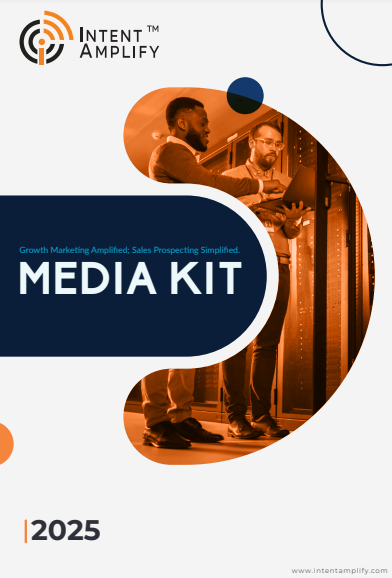
7 KPIs to Measure the Success of Your B2B ABM Advertising Campaigns
- Last updated on: August 22, 2025
Account-Based Marketing (ABM) is currently the basis for innovative B2B growth strategies, especially in the tech, SaaS, fintech, and cyber sectors. Contrasting with broad-demand generation, ABM addresses high-value accounts and purchasing committees, converging marketing and sales to influence measurable business outcomes.
But launching ABM ads is only half the battle – the real success lies in tracking the right Key Performance Indicators (KPIs). Traditional metrics like clicks or impressions aren’t enough. To prove ROI, marketing leaders must measure engagement, pipeline influence, deal velocity, and revenue impact. In this article, we’ll break down seven KPIs that define the success of your ABM advertising campaigns and show how they help optimize performance and accelerate growth.
KPI #1: Account Engagement Score
The Account Engagement Score measures how much target accounts are interacting with your ABM programs at various touchpoints. Instead of being concerned with vanity metrics like clicks, it measures whether decision-makers and influencers of a buying committee are responding to your emails, events, ads, or content. This gives you a clearer idea of whether marketing is speaking to the right people or generating surface-level engagement.
The majority of companies track this KPI using a weighted scorecard framework, where high-value activities such as watching a webinar, asking for a demo, or downloading materials are weighted more heavily than ad clicks or visits to the website. Regularly, engagement scores reveal which accounts are warming up and where the sales teams need to concentrate efforts on outreach. For B2B companies with longer sales cycles, this is an early metric of campaign effectiveness, providing proof of effect even before pipeline revenue is evident.
KPI #2: Pipeline Influence
Arguably, the most effective way to measure ABM ad effectiveness is Pipeline Influence – the extent to which your campaigns are playing a role in developing or accelerating sales opportunities. In contrast to more general demand generation metrics, pipeline influence closes the gap between marketing activities and revenue outcomes by examining how target accounts exposed to ABM ads flow into opportunities. Forrester research reveals that ABM programs generate 21%–350% higher ROI than traditional marketing approaches.
This KPI allows you to answer a critical question: Are your campaigns opening doors to sales? By linking campaign touchpoints to opportunities generated or propelled through in the CRM, you can show marketing’s role in driving revenue growth. For example, if target accounts engaging with ABM ads are showing a higher conversion rate to pipeline compared to non-target accounts, you have concrete proof that your advertising is working.
KPI #3: Deal Velocity (Sales Cycle Acceleration)
In B2B commerce, where sales cycles can drag on for years or months, Deal Velocity is a vital metric to measure the effectiveness of ABM. Deal Velocity is calculated as the velocity at which target accounts move from early interest to closed-won deals after your campaigns have affected them. The higher the velocity, the more it indicates that your message is reaching the intended stakeholders and reducing friction in the decisioning process. Tools like Salesforce Sales Cloud, HubSpot CRM, and Clari help track this metric directly within pipelines, while analytics platforms such as Tableau or Power BI can be used to visualize velocity trends across accounts.
To measure this KPI, compare non-engaged vs. engaged sales cycles’ average duration. If your campaigns are having the impact of accelerating key stages – discovery, proposal, or negotiation – it means ABM is not only generating leads but also compressing time-to-revenue. For growing businesses, deal velocity measures operational efficiency achieved by making highly personalized campaigns.
KPI #4: Account Penetration
Account Penetration tracks the extent to which your campaigns are penetrating various stakeholders in a target account. In enterprise B2B transactions, purchasing decisions are never about one person but committees of influencers, technical experts, and spenders. The higher the penetration rate, the greater the ability of your messaging to permeate multiple roles across departments, enhancing the prospects of generating consensus for your solution.
To capture this KPI, monitor engagement by different job titles, business segments, or geographies within an account. For instance, if your ads and content are simply engaging IT managers but not CFOs or procurement, you are priming the pump for deal stalling later on. Balanced account penetration means penetration across buying committee members and allows the sales team to shepherd opportunities more easily through the funnel.
KPI #5: Marketing Qualified Accounts (MQAs)
ABM has the traditional definition of Marketing Qualified Leads (MQLs) evolve into Marketing Qualified Accounts (MQAs). MQAs are a KPI marking target accounts with intent or engagement signals strong enough to be transferred from marketing to sales for more in-depth investigation. While single leads cannot be compared, MQAs represent the aggregate activity of several stakeholders in an account.
Tracking MQAs ensures sales and marketing alignment with a clear handoff point. Typically, an account is assigned as an MQA after it has passed a given engagement threshold – e.g., multiple contacts engaging with content, visiting key site pages, or reacting to focused ads. By focusing on MQAs, organizations can direct resources to accounts most likely to convert into customers, thereby ensuring campaign spend is translated into qualified pipeline opportunities.
KPI #6: Customer Acquisition Cost (CAC) at the account level
In ABM, with campaigns that are resource-intensive and very targeted, it is important to measure the Customer Acquisition Cost (CAC) at the account level. This KPI measures the amount of marketing and sales investment required to acquire a new customer from your target prospect list. Tracking CAC allows you to determine if the accounts you are targeting are generating a sustainable return on investment.
To calculate this, simply take the total spend on an ABM campaign and divide by the new customers purchased from target accounts. A rising CAC may reflect inefficiencies or misaligned targeting, while a level or declining CAC indicates your campaigns are costing less per customer purchased as time goes on. For C-level executives, this KPI provides an unambiguous link between marketing spend and revenue impact.
KPI #7: Account Expansion and Retention
New account acquisition is a valuable thing, but so is measuring how successfully you retain and grow existing accounts with ABM. Your Retention and Expansion KPIs track renewal rates, upsell opportunities, and cross-sell success in accounts touched by your ABM campaign. In sectors like SaaS and fintech, where recurring revenue drives long-term growth, this metric is a significant indication of campaign value.
Tracking post-sale engagement is paramount – if accounts continue to interact with your custom campaigns, they will renew and expand their relationship. Steady retention rates combined with strong upsell growth prove that ABM campaigns are not only filling the pipeline but generating high-value, long-term customers. For enterprise-level companies, this metric shows the entire lifecycle impact of ABM advertising.
Matching KPIs to Sales and Marketing Objectives
Account-level measurement of the right KPIs is what turns ABM advertising from a tactical experiment into a scalable growth strategy. While impressions and clicks may indicate activity, actual success in B2B ABM is measured by tracking account engagement, pipeline effect, deal velocity, penetration, MQAs, acquisition cost, and long-term retention. These metrics give marketing leaders the visibility to prove ROI, align with sales, and refine campaigns for ongoing revenue impact.
At Intent Amplify®, we specialize in helping technology, SaaS, fintech, and cybersecurity companies develop and execute ABM programs that drive growth measurably. From planning campaigns to measuring performance, we ensure your ad spend translates into a qualified pipeline and revenue growth. Ready to unlock the full potential of ABM? Contact us today.
FAQs
1. What is the most important KPI for ABM campaigns?
Though all the metrics are useful, account engagement and pipeline influence usually bear the greatest significance since they connect most immediately to marketing efforts and revenue outcomes.
2. What’s the difference between Marketing Qualified Account (MQA) and MQL?
MQLs measure interest at the individual level, while MQAs measure collective engagement by multiple stakeholders within a target account and hence work best for ABM campaigns.
3. How often should marketers measure ABM KPIs?
Marketers must constantly monitor KPIs and formally review them at least once a month to recognize patterns, optimize campaigns, and push sales alignment.
4. Should traditional demand generation metrics play a part in ABM?
Yes, but only as secondary metrics. Marketers need to supplement measures like clicks or impressions with account-level KPIs to get a complete picture of performance.
5. How does ABM influence Customer Acquisition Cost (CAC)?
ABM will create higher initial CAC for personalization and targeting costs, but ultimately gives higher ROI via win rates and a customer’s lifetime value.




